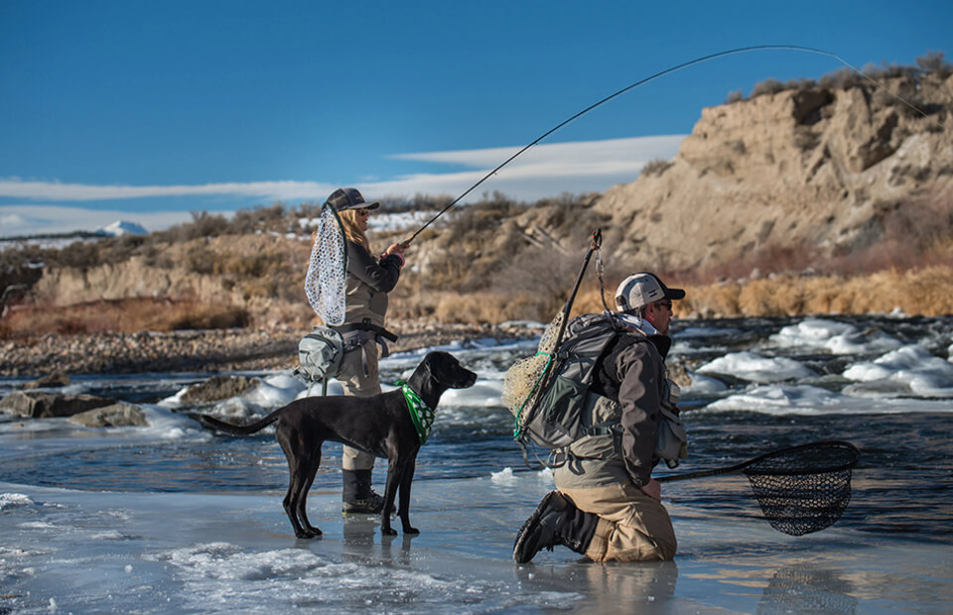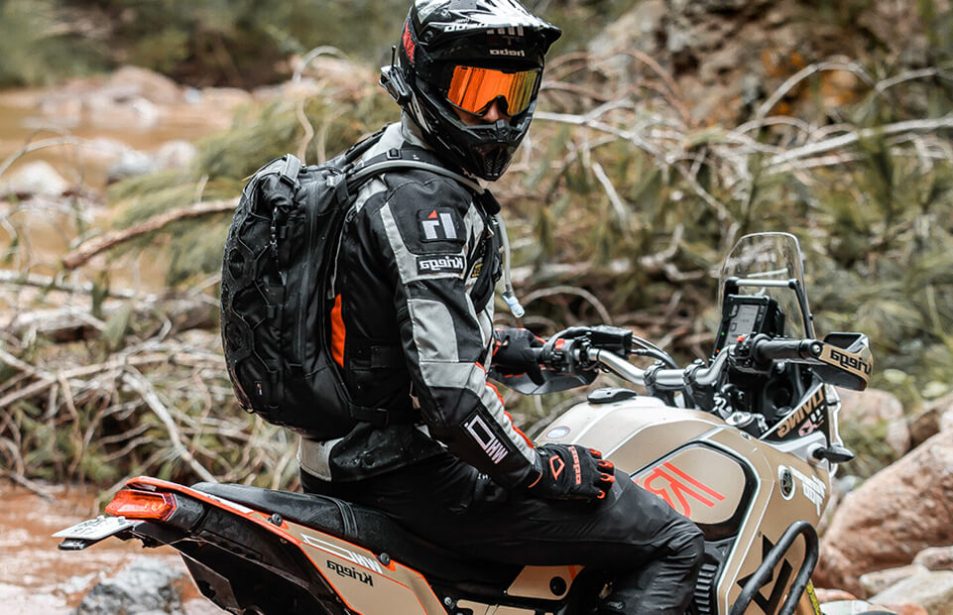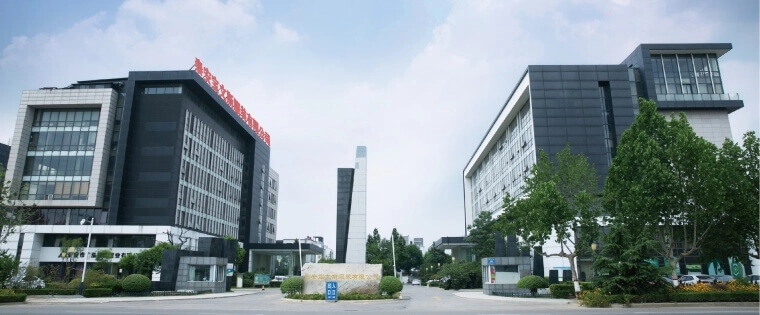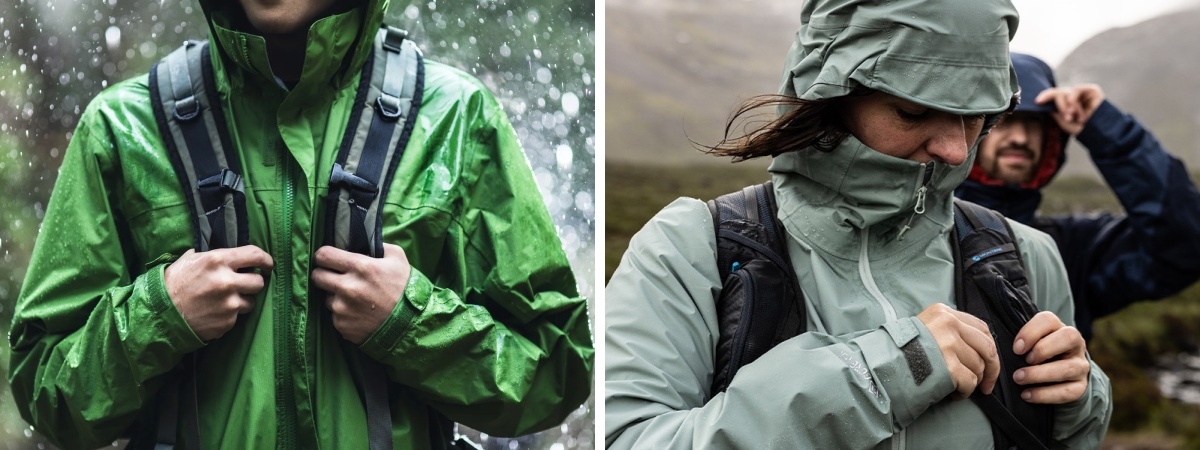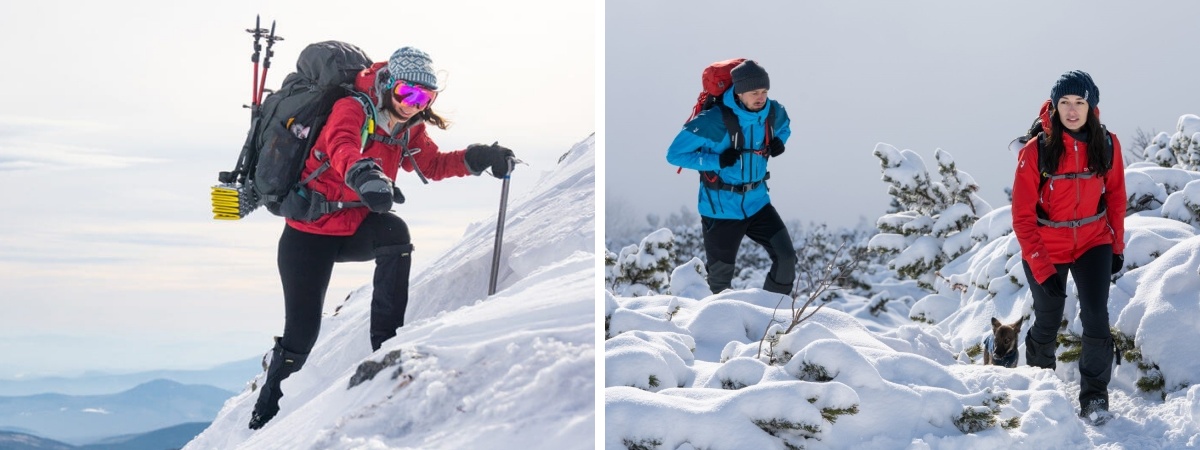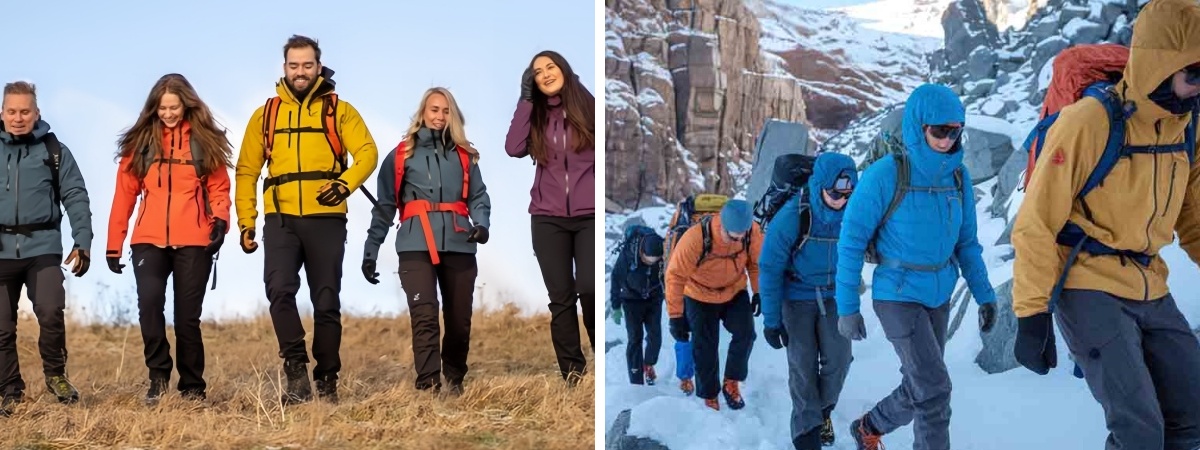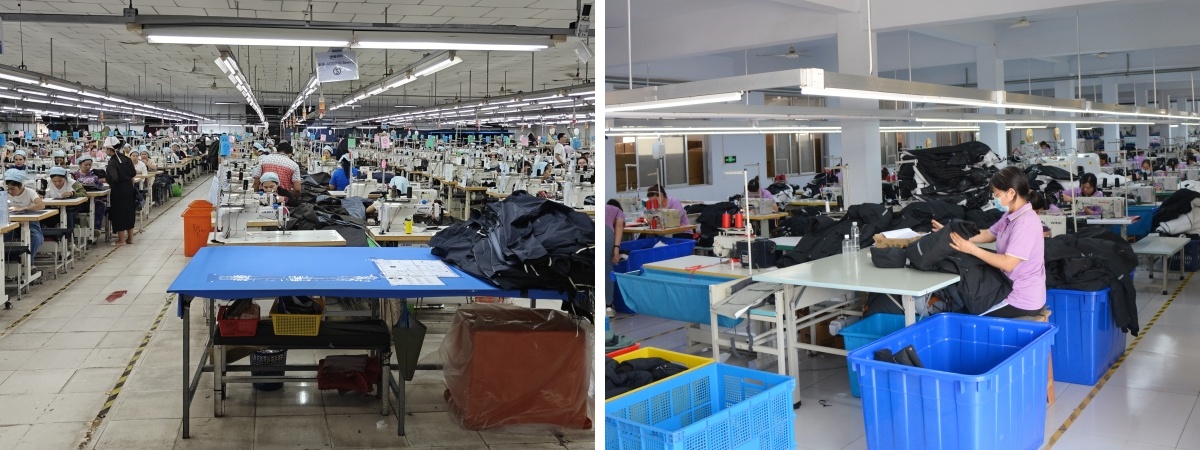Outdoor Clothing: Global Market Dynamics, Innovation Trends & B2B Procurement Guide
Outdoor Clothing Industry 2025: A Comprehensive Overview for International Buyers
The global outdoor clothing sector has transitioned from a niche market for adventurers to a mainstream industry driven by evolving consumer lifestyles, technological breakthroughs, and growing environmental awareness. As outdoor activities—ranging from casual hiking to extreme mountaineering—gain unprecedented popularity, the demand for high-performance, durable, and sustainable outdoor clothing continues to surge. This article delves into the core dynamics of the outdoor clothing industry, providing actionable insights for international B2B buyers seeking to navigate market complexities and identify reliable supply chain partners for products like waterproof outdoor jackets and eco-friendly hiking apparel.
Global Industry Background and Key Market Data
The outdoor clothing market has maintained a robust growth trajectory, fueled by rising disposable incomes and a global shift toward health-conscious lifestyles. According to a 2025 report by Grand View Research, the global outdoor clothing market size reached USD 172.3 billion in 2024 and is projected to expand at a compound annual growth rate (CAGR) of 6.2% from 2025 to 2030, reaching USD 238.7 billion by the end of the forecast period. This growth is not uniform across regions but is driven by distinct market dynamics, particularly in segments like premium outdoor clothing for professional adventurers and affordable options for casual users.
North America remains the largest market for outdoor clothing, accounting for 38% of global revenue in 2024, thanks to a well-established outdoor culture and high consumer spending power. The region’s market is further boosted by initiatives like the “Leave No Trace” movement, which emphasizes sustainable outdoor practices and drives demand for eco-friendly outdoor clothing. Europe follows closely, with a 32% market share, led by countries such as Germany and France, where strict environmental regulations are pushing manufacturers to adopt recycled materials in outdoor clothing production.
The Asia Pacific region is emerging as the fastest-growing market for outdoor clothing, with a projected CAGR of 7.8% from 2025 to 2030. Factors such as increasing urbanization, rising middle-class incomes, and growing interest in outdoor sports among millennia and Gen Z are driving this growth. China, in particular, has seen a surge in demand for premium outdoor clothing, with sales of high-performance hiking jackets— a key长尾关键词 —increasing by 45% in 2024 compared to the previous year. This surge is partly attributed to the popularity of domestic outdoor events and the growing preference for durable outdoor clothing that balances functionality and style.
In terms of product segmentation, jackets and pullovers dominate the outdoor clothing market, holding a 54% share in 2024, followed by pants and shorts (23%) and accessories such as gloves and hats (23%). The popularity of multi-functional outdoor clothing—such as 3-in-1 jackets that combine waterproof shells with removable insulation—has significantly contributed to the growth of the outwear segment. Another fast-growing category is eco-friendly outdoor apparel, as consumers and buyers increasingly prioritize sustainability alongside performance in outdoor clothing.
Key Trends Reshaping the Outdoor Clothing Industry
1. Sustainable Materials: From Compliance to Competitive Advantage
Sustainability has evolved from a buzzword to a critical purchasing criterion in the outdoor clothing industry. Regulatory pressures, such as the European Union’s ban on per- and hydrofluorocarbon substances (PFAS) in textile production (effective 2026), have accelerated the adoption of eco-friendly materials. Manufacturers are increasingly using recycled polyester, organic cotton, and bio-based fabrics like Terence Photocell in outdoor clothing production, especially for eco-friendly outdoor apparel that caters to environmentally conscious buyers.
A notable trend is the rise of recycled TPU (thermoplastic polyurethane) films, which replace traditional PVC coatings in waterproof outdoor clothing. Recycled TPU not only reduces plastic waste but also maintains the same level of water resistance and breathability as virgin materials. Brands and buyers alike are prioritizing third-party certifications, such as the Global Recycled Standard (GRS) and OEKO-TEX Standard 100, to validate the sustainability claims of outdoor clothing products, particularly in high-demand segments like waterproof outdoor jackets.
2. Technological Innovations in Functional Fabrics
Technological advancement is a key differentiable in the outdoor clothing market, with manufacturers investing heavily in fabric innovation to enhance performance. One of the most significant developments is the integration of smart textiles into outdoor clothing, such as jackets with built-in thermal regulation systems that adjust temperature based on the wearer’s activity level. These smart outdoor clothing products use conductive fibers and battery-powered sensors to provide real-time comfort, catering to professional athletes and outdoor enthusiasts who rely on their outdoor clothing for safety and performance.
Another major innovation is the development of lightweight, high-insulation materials for cold-weather outdoor clothing. For example, Prim aloft Gold Insulation, a synthetic alternative to down, offers superior warmth-to-weight ratio and retains insulation even when wet—addressing a long-standing pain point for buyers in rainy or snowy regions. Additionally, advances in seam-sealing technology have improved the waterproof performance of outdoor clothing, with laser-welded seams replacing traditional stitching to eliminate water penetration points, a critical feature for waterproof outdoor jackets used in extreme conditions.
3. Customization for Regional Market Needs
International buyers are increasingly seeking customized outdoor clothing solutions to meet the unique needs of regional markets. For instance, buyers in Southeast Asia prioritize lightweight, breathable outdoor clothing with UV protection to combat the hot and humid climate, while those in Northern Europe require heavy-duty, windproof jackets with high insulation for harsh winters. Manufacturers that offer flexible customization—including fabric selection, color options, and logo printing—are gaining a competitive edge, especially for clients looking to brand premium outdoor clothing for their specific markets.
The rise of e-commerce has further fueled the demand for personalized outdoor clothing, as online retailers seek to differentiate their offerings through unique designs and limited-edition collections. This trend has led to shorter production cycles and lower minimum order quantities (Mobs) for customized outdoor clothing, making it more accessible for small and medium-sized B2B buyers looking to enter niche segments like eco-friendly outdoor apparel or specialized hiking gear.
Technical Specifications and Product Structure of High-Quality Outdoor Clothing
The performance of outdoor clothing is determined by a combination of material selection and technical specifications. For B2B buyers, understanding these parameters is critical to ensuring that products meet the needs of their target customers, whether they’re sourcing waterproof outdoor jackets for mountaineers or lightweight eco-friendly outdoor apparel for casual hikers. Below are the key technical specifications for high-quality outdoor clothing:
Waterproof Index: Measured in millimeters of water column (mmH₂O), this parameter indicates the amount of water the fabric can withstand before leaking. Mid-range outdoor clothing typically has a waterproof index of 5,000–10,000 mmH₂O, while premium products for extreme conditions—such as professional mountaineering outdoor clothing—offer 10,000–20,000 mmH₂O. For example, waterproof outdoor jackets designed for alpine use require a minimum waterproof index of 15,000 mmH₂O to withstand heavy rain and snow.
breathability: Expressed as grams of water vapor per square meter per 24 hours (g/m²/24h), breathability measures the fabric’s ability to allow moisture to escape. High-performance outdoor clothing for active use (such as hiking or running) should have a breathability rating of 8,000–20,000 g/m²/24h to prevent sweat buildup. Fabrics like Gore-Tex and e Vent are renowned for their balance of waterproof and breathability.
Insulation: For cold-weather outdoor clothing, insulation is measured by fill power (for down) or thermal resistance (for synthetic materials). Down insulation typically ranges from 600 to 900 fill power, with higher values indicating better warmth-to-weight ratio. Synthetic insulation, such as Prim aloft, is rated by its thermal resistance (R-value), with values between 1.0 and 3.0 for most outdoor clothing applications.
The product structure of outdoor clothing is designed to provide layered protection, a feature that enhances the versatility and value of any outdoor clothing collection. The outer layer, often made of polyester or nylon, is responsible for waterproofing and fireproofing—essential for waterproof outdoor jackets. The middle layer, which can be a fleece or synthetic insulation, provides warmth, while the inner layer, typically made of moisture-kicking fabric like merino wool or polyester, draws sweat away from the skin. This layered structure allows users to adjust their clothing based on weather conditions and activity level, making it a key selling point for both premium and affordable outdoor clothing.
Manufacturing Process of Premium Outdoor Clothing
The manufacturing process of high-quality outdoor clothing is a precision-driven workflow that ensures consistent performance and durability. Below is a detailed breakdown of the key stages:
1. Material Sourcing and Testing: The first step involves selecting high-quality fabrics and trims (such as zippers, buttons, and Velcro) that align with the performance goals of the outdoor clothing. Reputable manufacturers conduct rigorous testing of raw materials, including tensile strength, waterproof, and colorfastness, to ensure compliance with international standards. For sustainable outdoor clothing like eco-friendly outdoor apparel, materials are sourced from certified suppliers with GRS or OEKO-TEX certifications to validate their environmental credentials.
2. Design and Pattern Making: Design teams create patterns based on regional sizing standards (e.g., US, EU, Asian sizes) and functional requirements specific to different types of outdoor clothing. For customized outdoor clothing, buyers can provide design specifications, including logos, color schemes, and pocket placements tailored to their target market. Computer-aided design (CAD) software is used to refine patterns and ensure accurate sizing, which is crucial for customer satisfaction whether the product is a waterproof outdoor jacket or a lightweight hiking shirt.
3. Cutting and Sewing: Fabrics are cut using computerized cutting machines to ensure precision and minimize waste, a practice that supports sustainability goals in outdoor clothing production. Sewing is done using high-strength threads, with special attention to stress points such as cuffs and hems that endure frequent use. For waterproof outdoor clothing, seams are sealed using thermal tape to prevent water penetration—a critical step that requires specialized equipment and skilled labor to maintain consistent performance across all units.
4. Quality Control and Finishing: Finished outdoor clothing undergoes multiple quality control checks, including waterproof testing, breathability testing, and fit verification. Any defects are repaired or discarded before the final finishing process, which includes washing, drying, and packaging. Premium outdoor clothing may also undergo additional testing, such as abrasion resistance and colorfastness to sunlight, to ensure it meets the high standards expected by professional users and discerning consumers.
International Buyer Procurement Preferences and Pain Points
Key Procurement Preferences
International B2B buyers of outdoor clothing prioritize the following factors when selecting suppliers:
1. Quality Consistency: Buyers require outdoor clothing to meet consistent performance standards across production batches, as inconsistent quality can damage their brand reputation. This includes uniform waterproofing for outdoor jackets, breathability for active-wear, and stitching quality for all types of outdoor clothing. Suppliers that implement ISO 9001 quality management systems are more likely to win long-term partnerships, as they demonstrate a commitment to reliable production.
2. Sustainability Credentials: As environmental awareness grows, buyers increasingly demand outdoor clothing made from recycled or organic materials with valid certifications. This is particularly true for segments like eco-friendly outdoor apparel, where consumers actively seek products that align with their values. Suppliers that can provide transparent supply chain reports and sustainability audits have a competitive advantage in winning contracts for sustainable outdoor clothing.
3. Flexible Customization: The ability to customize outdoor clothing—including fabric, design, and branding—allows buyers to cater to regional market needs and stand out from competitors. For example, a buyer in the Middle East may request UV-protective outdoor clothing in local color palettes, while a European buyer might prioritize recycled materials for their waterproof outdoor jackets. Suppliers that offer low MOQs for customized orders (typically 500–1,000 units) are particularly popular among small and medium-sized buyers.
4. Reliable Lead Times: Seasonal demand fluctuations require suppliers to deliver outdoor clothing on time. For example, winter jackets must be delivered by August to meet Q4 retail deadlines. Suppliers with multiple production facilities and efficient logistics networks are better equipped to meet tight lead times.
Common Procurement Pain Points
Despite the growing market, international buyers face several challenges when sourcing outdoor clothing:
1. Quality Discrepancies: A common issue is that sample outdoor clothing meets quality standards, but bulk orders do not. This can be caused by poor quality control or the use of substandard materials in mass production, and it’s particularly problematic for high-performance items like waterproof outdoor jackets where reliability is critical. Buyers often cite this as a top concern when selecting new suppliers.
2. Sustainability Greenwashing: Some suppliers make false sustainability claims, such as labeling outdoor clothing as “recycled” without proper GRS certification or exaggerating the eco-friendliness of their production processes. This can lead to legal risks and reputational damage for buyers, especially those marketing eco-friendly outdoor apparel to conscious consumers.
3. Communication Barriers: Language differences and time zone gaps can lead to miscommunication regarding design specifications, lead times, and quality requirements. Suppliers with multilingual sales teams and clear communication protocols mitigate this risk.
4. Rising Costs: Fluctuations in raw material prices (e.g., polyester, TPU) and shipping costs can increase the total cost of outdoor clothing procurement. Buyers seek suppliers that offer transparent pricing and long-term cost stability.
B2B FAQ: Critical Questions for Outdoor Clothing Procurement
Q1: What certifications are mandatory for exporting outdoor clothing to the European Union?
A1: For the EU market, outdoor clothing must comply with the REACH Regulation, which restricts the use of harmful chemicals. Additionally, if claiming sustainability—critical for eco-friendly outdoor apparel—GRS (for recycled materials) or OEKO-TEX Standard 100 (for chemical safety) certifications are mandatory. Waterproof outdoor clothing may also need to meet EN 343 (protective clothing against rain) standards, which specify performance requirements for water resistance and breathability.
Q2: How can I verify the performance claims of outdoor clothing suppliers?
A2: Request third-party test reports from accredited laboratories, such as SGS or Intertek, covering waterproofness, breathability, and insulation—key metrics for any outdoor clothing. For waterproof outdoor jackets, ask for specific data on mmH₂O ratings and seam integrity. Request sample products to conduct your own testing, and insist on factory audits to inspect quality control processes firsthand. Reputable suppliers will readily provide these resources to build trust.
Q3: What is the typical lead time for bulk orders of outdoor clothing?
A3: Lead times vary based on customization complexity and order size. Standard orders (no customization) typically take 30–45 days. Customized orders, such as those with unique designs or logos, may take 45–90 days. It is recommended to place orders 3–6 months in advance of peak seasons.
Q4: Can suppliers accommodate small-batch orders for niche outdoor clothing segments?
A4: Yes, many specialized suppliers offer MOQs as low as 500 units for niche segments like premium mountaineering clothing or children’s outdoor wear. Some suppliers also provide “sample runs” of 100–200 units to test market demand before placing bulk orders.
Take Action: Partner for Premium Outdoor Clothing Solutions
Navigating the global outdoor clothing market requires a reliable supply chain partner that understands your regional needs, prioritizes quality, and embraces sustainability. Our manufacturing facilities are ISO 9001 and GRS certified, producing high-performance outdoor clothing—from waterproof outdoor jackets to eco-friendly hiking apparel—tailored to markets across North America, Europe, and Asia. We specialize in balancing technical performance with environmental responsibility, ensuring your outdoor clothing meets both buyer demands and regulatory standards.
Whether you need lightweight hiking jackets for Southeast Asia, insulated parkas for Northern Europe, or sustainable activewear for the US market, we offer flexible customization, transparent pricing, and on-time delivery. Our team works closely with you to address specific requirements, from fabric selection for extreme climates to branding that resonates with your target audience. To move forward, simply reach out to our B2B team to request:
• Free product samples with detailed technical specifications
• Competitive bulk pricing quotes tailored to your order size
• Sustainability reports and certification documents
Our experts are available 24/7 to address your questions—whether about technical specifications for outdoor clothing, sustainability certifications, or customization options—and help you overcome procurement pain points. Contact us today to build a long-term partnership that drives your outdoor clothing business forward, and let’s create products that stand out in competitive global markets.

